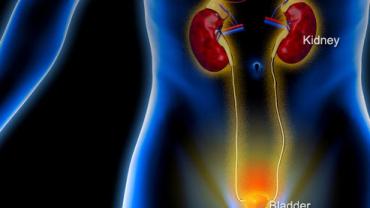
According to a recent study in The Journal of Biological Chemistry diet and the acidity of urine may impact how well bacteria can proliferate in the urinary tract. Urinary tract infections (UTIs) are one of the most common bacterial infections and are often caused by Escherichia coli (E. coli). The standard of care has been treatment with antibiotics; however increasing bacterial resistance has lead researchers to search for alternative treatments.
Many physicians see patients who are particularly susceptible to urinary tract infections but they often don't know the reason behind their increased susceptibility. Antibiotics have worked very well for quite some time but over the last ten to fifteen years there has been a significant increase in bacterial infections that are resistant to many of these antibiotics.
As a result researchers investigated how the body naturally fights bacterial infections. They cultured E. coli in urine samples and noted major differences between them. The urine samples that prevented bacterial growth promoted more activity of siderocalin a key protein that the body naturally makes in response to infection. Previous research has suggested that it helps the body fight infections by depriving bacteria of iron a mineral necessary for bacterial growth.
Of all the factors assessed the only one that was significantly different between the two groups was the pH of the urine. The urine samples that were less acidic (closer to a neutral pH) demonstrated an increased activity of siderocalin and were more effective at restricting bacterial growth than those with higher acidity.
After analyzing thousands of compounds in the samples the researchers discovered that the presence of small metabolites called aromatics which vary depending on an individuals diet also contribute to bacterial growth. Samples that restricted bacterial growth were shown to have more aromatic compounds present. Researchers suspect that some of these aromatics are good iron binders depriving the bacteria of iron and are produced by a person's gut microbes as they process the food they eat.
This study suggests that the body's immune system harnesses dietary plant compounds to prevent bacterial growth that are associated with specific dietary components and with gut microbes.
Their results suggest cranberries as one possible dietary intervention. D-Mannose an active component in cranberry enhances the removal of bacteria from the urinary tract and bladder by blocking their adhesion to the mucosal walls. Also Hibiscus sabdariffa has powerful antimicrobial and bacterial anti-adhesive properties especially against E. coli.
Researchers also studied the bacteria's methods for resisting the body's innate immunity. E.coli makes a compound called enterobactin that binds strongly to iron. This study demonstrated that enterobactin is particularly good at binding iron in urine therefore discovering ways to block it may open up new opportunities for developing alternatives that work differently than traditional antibiotics.
Bacteriophages a forgotten therapy is the ideal option here. With the growing levels of antibiotic resistance and the exit of major pharmaceutical companies from antibiotic development phage therapy becomes a great treatment of choice for the growing number of infections. They are not very well known but are one of the most abundant naturally-occurring organisms on earth. They can be found everywhere from the soil to drinking water. They only prey on bacteria never human cells and the bacteria have a difficult time becoming resistant to them. Phages are great because they are species specific meaning different strains attack different bacteria. This makes them harmless to human cells and even to non-targeted bacteria. This is much different than antibiotics that can wipe out all the beneficial bacteria of the gastrointestinal tract along with the harmful bacteria. Phages are classified as prebiotics and there are specific phages that can infect and inhibit the growth of E. coli only.
Phages can be used to support overall urinary tract health and can be used for both prophylactic and therapeutic applications against bacterial infections. Phage therapy has an 80 to 90 percent success rate against bacteria likely to show antibiotic resistance such E. coli. In contrast many antibiotics fail against evolved forms of these pathogens.